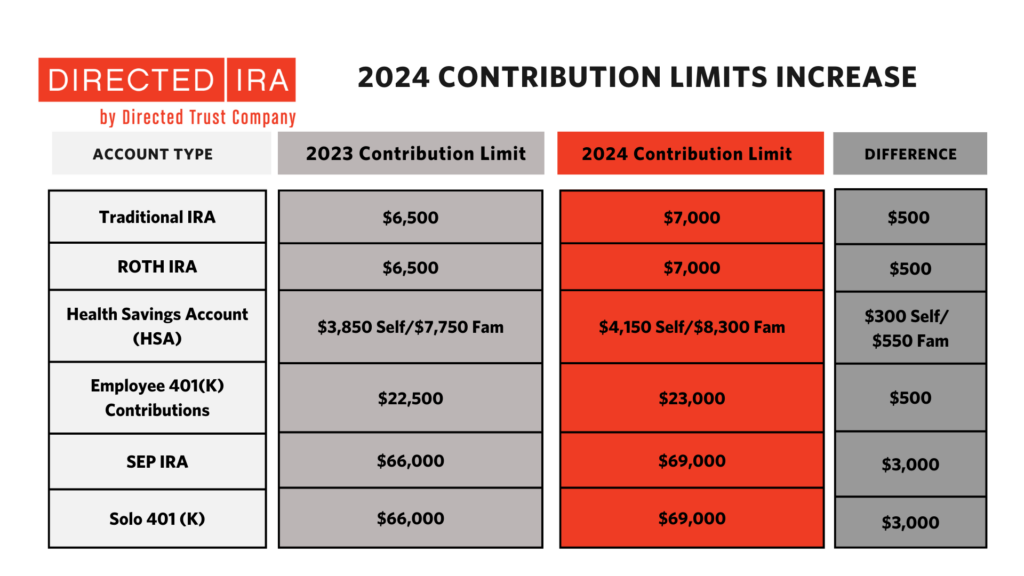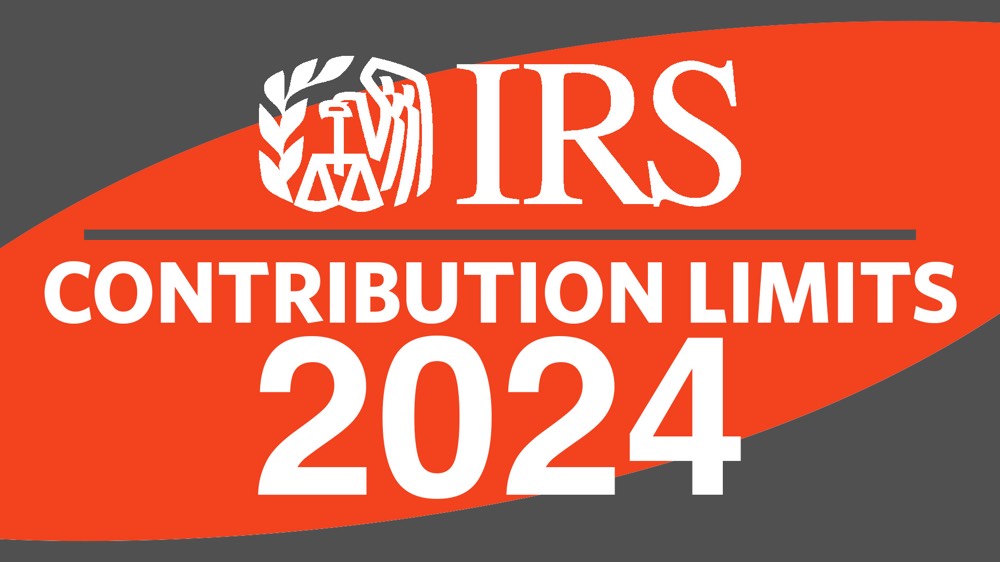Contribution Limits Increase for Tax Year 2024 For Traditional IRAs, Roth IRAs, HSAs, SEP IRAs, and Solo 401(k)s
The IRS increased the 2024 contribution limits for self-employed persons who contribute to a Solo 401(k) from $66,000 to $69,000 (employee plus employer contributions). For those 50 or older, there is also still a $7,500 catch-up contribution amount allowing total contributions in 2024 of $76,500. The Solo 401(k) has become a popular savings tool for self-employed persons who don’t have an employer 401(k) plan, as they allow them to contribute more than the annual $7,000 contribution that is allowed in a Traditional IRA or Roth IRA. Solo 401(k)s are also easier to administer than pension plans, and standard 401(k)s and have proven to be an optimal fit for self-employed persons who do not have full-time employees other than themselves, partners, and family.
For a SEP IRA, the contribution limit increases from $66,000 in 2023 to $69,000 (or the lesser of 25 percent of the first $345,000 of compensation) in 2024. SEP IRAs don’t have a catch-up contribution.
The IRS changed the 2024 contribution limits on Traditional IRAs and Roth IRAs and those amounts are now $7,000 annually, with a $1,000 catch-up for those 50 or older. That’s an increase of $500 from 2023 limits. The 2024 income phaseout for Roth IRA contributions begins at $146,000 for singles and heads of household (up from $138,000 in 2023) and starts to phase out at $230,000 for married couples filing jointly (up from $218,000 in 2023). If you phase out standard Roth IRA contributions because you are high-income, you can contribute using the back-door Roth IRA method.
Employee contribution limits to 401(k)s were increased in 2024 to $23,000 from $22,500 in 2023.
HSA contribution limits for individuals will go up from $3,850 to $4,150 in 2024, and family contributions will increase from $7,750 to $8,300.
2024 Contribution Limits

All of these accounts provide tax preferences and benefits over a typical savings account. The HSA, Traditional IRA, Solo 401(k), and SEP IRA all provide tax deductions when you contribute to them, and the funds grow tax deferred. For Roth IRAs and Roth accounts in Solo 401(k)s, there is no tax deduction on your contributions, but the funds grow and come out tax-free at retirement. One of the most significant costs to growing wealth and assets for retirement is taxes. These accounts all provide tax advantages over typical savings and brokerage accounts with non-retirement account dollars.
2023 Contributions Can Be Made in 2024
Taxpayers now have until April 15th, 2024, to contribute to their Individual Retirement Accounts (IRAs), Health Savings Accounts (HSAs), and Coverdell Education Savings Accounts (ESAs).
For Solo 401(k)s both employee and employer contributions can be made up until the company’s tax return deadline including extensions. If you have a sole proprietorship (e.g. single-member LLC or schedule C income) or C-Corporation, then the company tax return deadline is April 15th, 2024. If you have an S-Corporation or partnership LLC, the deadline for 2023 contributions is March 15th, 2024. Both deadlines (March 15th and April 15th) to make 2023 contributions may be extended another six months by filing an extension. This is a huge benefit for those that want to make 2023 contributions but who won’t have funds until later in 2024.
If you are looking for tax deductions, tax-deferred growth, or tax-free income, you should be using these accounts. Keep in mind there are qualifications and phase-out rules that apply, so make sure you are getting competent advice about which accounts should be utilized in your specific situation. And lastly, the power of using these accounts is in maximizing investment returns. All these accounts can be self-directed and invested into assets you know best. When you contribute funds to these accounts, those funds can be invested to grow. You can then invest in public stock, ETFs, and mutual funds, but also in real estate, private companies and funds (LPs and LLCs), and small businesses using self-directed account providers. Consider your investment options wisely and seek out professional advice as needed to become educated and informed on how to best achieve your financial goals.

